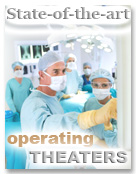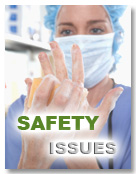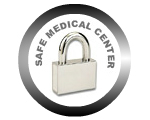
- RP Specialized in:
- Plastic Surgery in Argentina
- Treatments
- Breast Implant Surgery
- Rhinoplasty
- Vaser® Lipo System
- Liposuction
- Eyelid Surgery
- Tummy Tuck
- Breast Lift
- Facelift
- Lifting the Tip of the Nose
- Breast Reduction
- Double Chin Surgery
- Eye Shaping Surgery
- Chin Augmentation
- Ear Surgery
- Mentoplasty
- Eyebrow Lift
- Mini Facelift
- Cantopexy
- Deep Chemical Peel - Resurfacing
- Plastic Surgery Information
- Plastic Surgery Costs
- Cosmetic Procedures
- Hair Transplant
- Dermatology
- Phlebology
- Related information
- Related Links
- Web Directories
- Free Quotation
- Webmaster
» Eyebrow lift - Plastic surgery in Argentina
Table of Contents:
- » General Information: risks, anesthesia, recovery, pre-operative tests, etc.
- » How to get a quote - Photographs necessary - Requirements.
» IN PLASTIC SURGERY, EXPERIENCE COUNTS...
» General Information: risks, anesthesia, recovery, pre-operative tests:
What does an eyebrow lift involve?
With time, the "tip" of the eyebrow (the external end) tends to droop due to the effect of gravity and muscle action, giving the facial expression an air of sadness or tiredness, as well as accentuating the fold of the skin that hangs down from the upper eyelid.
This part of the brow can be lifted in several different ways: With Botulinum Toxin Type A - Botox® or through an Eyebrow Lift or Surgery. Each procedure has its advantages and the most appropriate will be chosen according to each patient.
What does Eyebrow Surgery or Lift involve?
It is a quick, out-patient procedure that usually takes about 30 minutes. It involves an incision in the temples on both sides of the forehead, behind the hairline so that the resulting scar remains hidden. Through these incisions, the tissue in the temple area is tightened, which lifts the tips of the brows.
Are there any risks? Which complications may arise?
All surgeries involve Risks:
By giving you all the information you need to make a decision, including information on the risks involved, we show our respect for you and allow you to have the last say in all matters concerning your surgery. We also believe that this speaks volumes about RP Medical Center, about who we are and how we work. It is our responsibility to provide you with all necessary information. We consider that Quality goes hand-in-hand with Responsibility. All patients have a right to be explained how the surgical procedure will be performed, together with the potential risks and complications (which are not caused by a Physician’s errors or malpractice, but which derive from the surgery itself or cannot be anticipated), and the advantages and disadvantages of certain techniques, so that they can think it over and make a balance before making any final decision.
Any surgical procedure has risks (whether an optional surgery, which you choose to undergo, or an emergency surgery); some risks are common to all surgical procedures and others are specific to each type of surgery. No surgery is exempt from risk. A plastic surgery is, after all, a surgery. Risks (each under different incidence percentages; see below) range from post-surgery complications which can be secondarily solved (bad scarring, seroma, skin necrosis, etc.) to severe and fatal complications such as reactions to anesthesia, pulmonary embolism (blood clots or "small blood balls" which could migrate to the heart and block the pulmonary artery causing severe injuries or even death), among others.
In 1997, the results of a survey were disclosed in the United States, based on 400,675 surgical procedures involving Plastic Surgery and Surgical Repair, where 7 deaths were found. The rate of severe complications (hypotension, hematoma, infection, hypertension episodes, sepsis) was 0.47% (1 case every 230 patients). One death occurred every 57,000 patients, that is, a mortality rate of 0.0017%; slightly less than 1 death every 57,000 patients. The survey documented the approximate safety level for plastic surgeries conducted by certified plastic surgeons in authorized facilities in the US, during those years.
Risks must be minimized by taking all appropriate preventive measures and complying with certain rules and requirements, including the requirement for pre-surgery tests, pre-operative and post-operative indications, the practice of surgeries in the proper facilities (which must be fully-equipped to cope with any inconveniences), patients’ full medical history, and their compliance with the Physicians’ guidelines after the surgery. It should be recalled that complications and risks may arise even where all precautions were taken and even if the patient is healthy. Given that these complications are not predictable, they may affect the patients of even the best surgeons in any country of the world, despite any precautions taken to reduce potential risks.
What type of anesthetics is used?
The procedure is performed with local anesthesia and sedation, so that the patient is totally relaxed and feels nothing.
What are the foreseeable results and how long do they last?
The results of this surgery are permanent. The tip of the eyebrows will remain lifted, replacing the sad tired look with a younger and fresher expression.
What precautions should be kept in mind after the procedure? When can I resume my normal everyday activities?
Post operation considerations
Most of the people go back to work 4 or 7 days after the surgery. The first 48 hours require total bed rest in a semi-seated position. No bandages are used. Stitches are removed after the 5th day. Patients should avoid sporting activities for 2 weeks, limit sun exposure for several months and use a sunscreen.
If I do not live in the City of Buenos Aires: How long should I stay approximately?
You will need to stay in Buenos Aires for 8 nights and 9 days. Stitches will be removed on the 5th day following surgery.
Which are the required pre-surgical tests?
It is necessary to undergo the following pre-surgical tests within 1 month before the date of surgery:
- I. Blood test: hemogram, blood sugar, creatinin, hepatogram, clotting time, serology HIV.
- II. Cardiology: ECG and surgical risk.
Mandatory pre-surgical instructions:
- Put off smoking 1 month in advance (all smoking patients have an increased risk of skin suffering in the area being operated on and of a delayed healing of scars).
- Discontinue Aspirin intake (Acetyl salicylic acid) 1 month in advance.
- Discontinue Vitamin E intake 1 month in advance.
- Apply anti tetanus vaccine.
- Anticoagulated Patients: Consult your hematologist to change treatment schedule.
» How to get a quote - Photographs necessary to undergo a surgery - Stay - Requirements:
» To request the right quote and provide all necessary information, go to: "How to travel to undergo a surgery", and read "Step No. 1", "Make arrangements for a surgery by following these easy steps".
» Required photographs for the Eyebrow Lift: Send 1 frontal photo and a photo of both profiles. The photos must cover the area going from the nose (included) up to the top of the head. The photo should not include the mouth or neck area to ensure the eye and eyebrow region is easily visible.
» Days of stay for Eyebrow Lift: 8 nights, 9 days. For further information on stay days, minimum stay, and schedule, among other matters, go to "How to travel to undergo a surgery" , read "Step No. 3", " Make arrangements for a surgery by following these easy steps."
» Hospitalization: Not required. After the surgery, a 4-hour recovery period at the clinic is required. You may then move to your place of accommodation.
» Why are photographs necessary?
Not only are photographs necessary to avoid paying for an unnecessary and more expensive surgical procedure, but also to determine whether the surgery for which you have come to us is the best type of surgery for you. Photographs are essential for our Physicians to analyze your case, to know how to proceed and offer you the personalized treatment that sets us apart. Your photographs also enable us to make a more precise quote.









